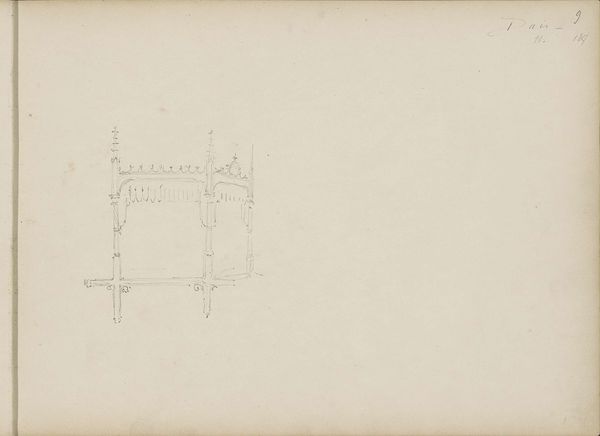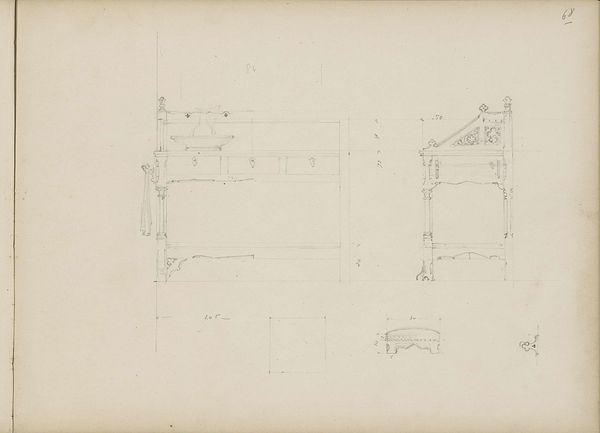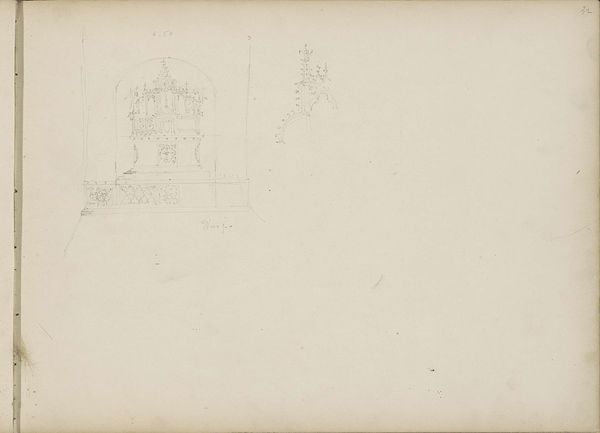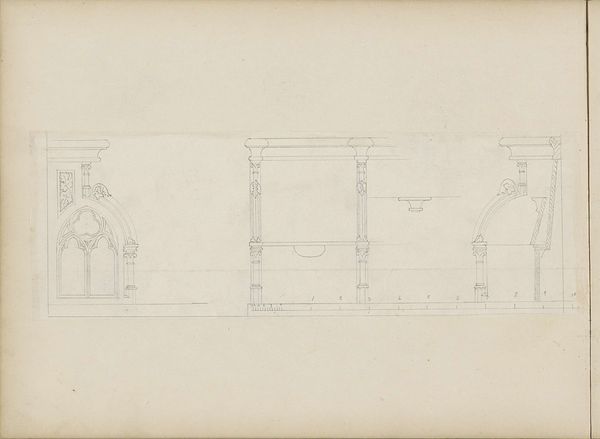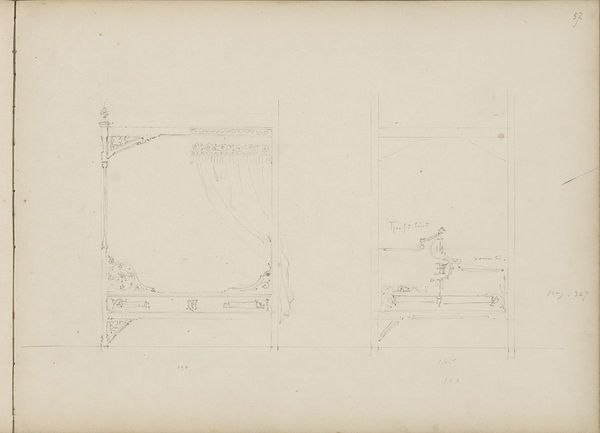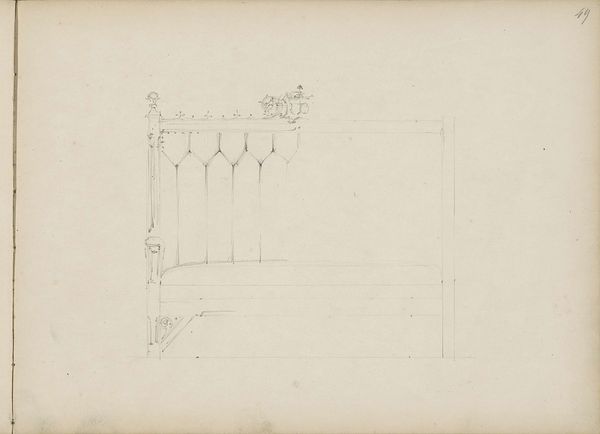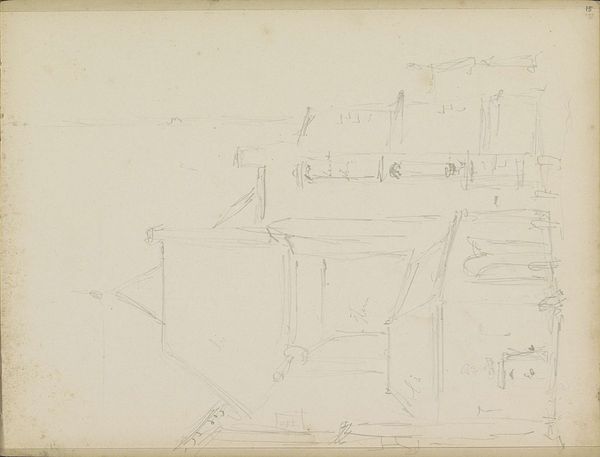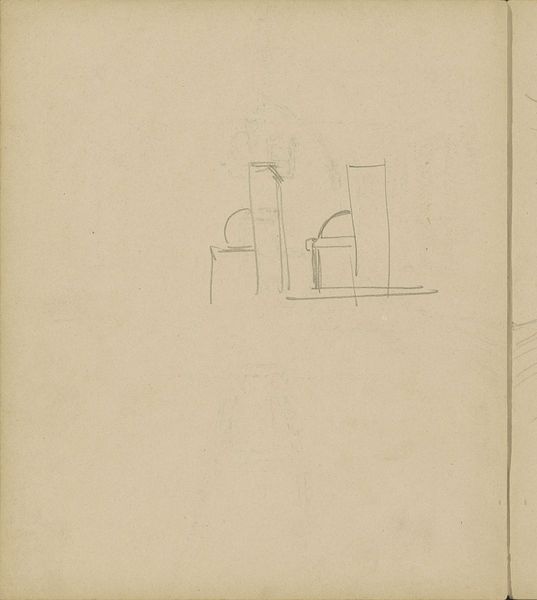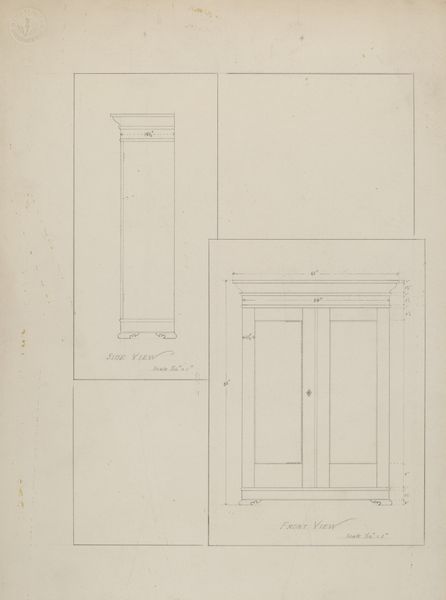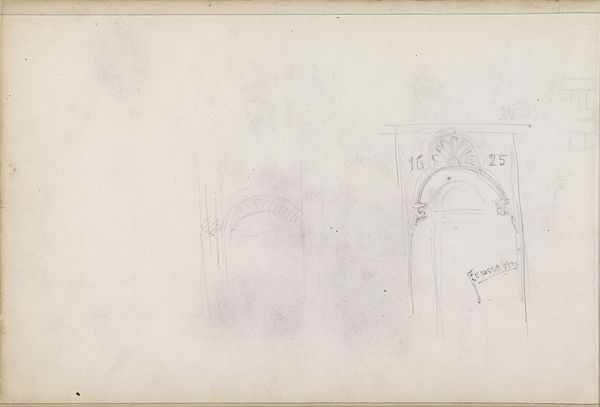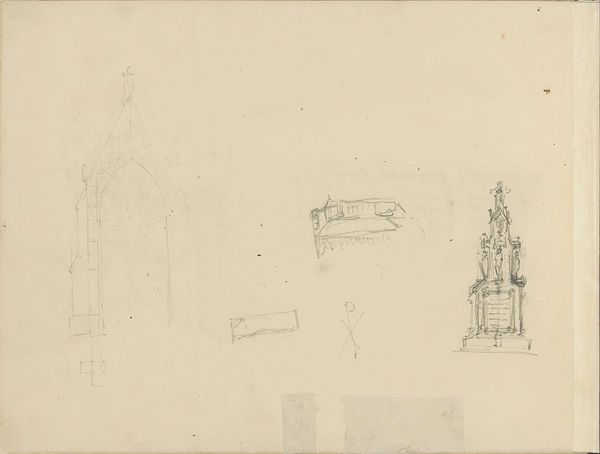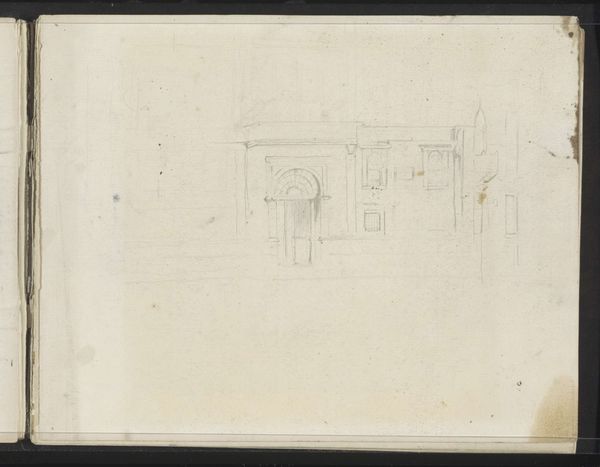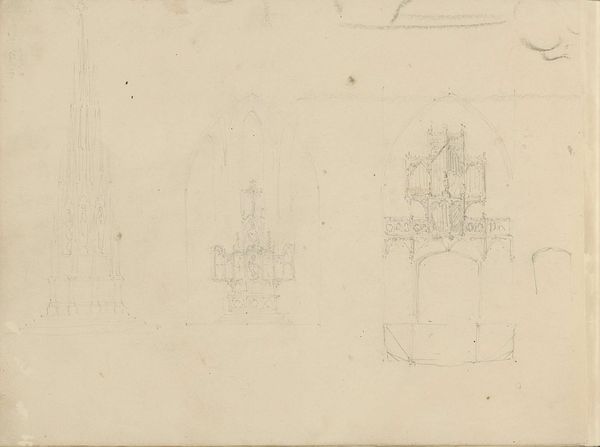
Zegel van de dominicaner orde en een lezenaar voor Letterkundig Genootschap 'De Lelie' 1857 - 1859
0:00
0:00
pierrejosephhubertcuypers
Rijksmuseum
drawing, paper, pencil, architecture
#
drawing
#
aged paper
#
toned paper
#
light pencil work
#
ink paper printed
#
sketch book
#
hand drawn type
#
paper
#
personal sketchbook
#
idea generation sketch
#
geometric
#
pencil
#
line
#
sketchbook drawing
#
academic-art
#
sketchbook art
#
architecture
Copyright: Rijks Museum: Open Domain
Curator: This drawing by Pierre Joseph Hubert Cuypers, dating from 1857 to 1859, presents a seal of the Dominican order alongside a lectern design for the literary society 'De Lelie.' Editor: The delicate pencil work immediately strikes me as ephemeral, almost like a fleeting thought captured on aged paper. The precision of the lines, however, hints at something far more concrete. Curator: Cuypers was deeply interested in the Gothic Revival, and we can see that in the architectural form of the lectern. Its construction—presumably of wood, given the era and likely intended use—speaks to the craftsmanship valued by both religious orders and literary societies at the time. The toned paper itself becomes part of the object's history; a testament to time and preservation. Editor: Indeed. The Dominican seal itself is dense with symbolism. I see angelic figures, possibly alluding to theological study and divine inspiration, tightly bound within that circular form. Placed alongside the design of the lectern, one gets a sense of how both sacred knowledge and secular literature were elevated—literally, on a stand—in society. Curator: The question becomes: how were these objects meant to function? A lectern is clearly for reading, for labor. Was the act of reading seen as equivalent between religious contemplation and literary pursuit? The meticulous design hints that even the mundane task of reading deserved proper form and thoughtful design, a concept often echoed in Cuypers' broader architectural works. Editor: And consider the very act of inscription! This sketch itself signifies a deliberate intent. The hand-drawn lettering visible adds to this feeling, bridging visual symbol and the written word in service of faith and reason. There is some cultural pride embedded in these objects, too, as each aimed to serve distinct communities and leave lasting legacies. Curator: The drawing serves as an artifact illustrating connections across craftsmanship and ideology. Cuypers’ choice of material and method showcases an artistic engagement with both religious and intellectual institutions. Editor: For me, the interplay between faith and intellectual pursuit emerges most strongly. Cuypers captures something about how societies visualize knowledge—divine or worldly.
Comments
No comments
Be the first to comment and join the conversation on the ultimate creative platform.
